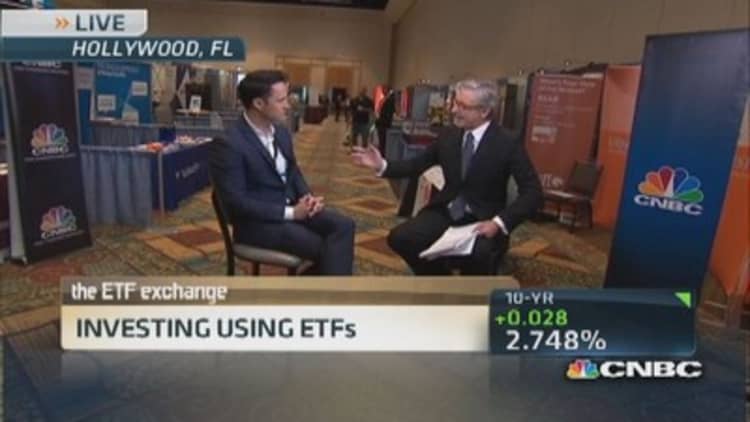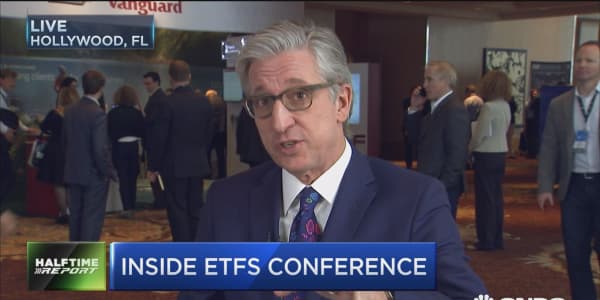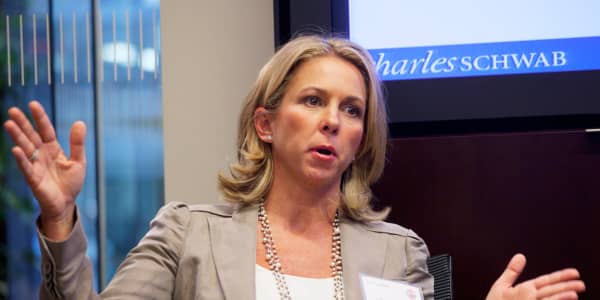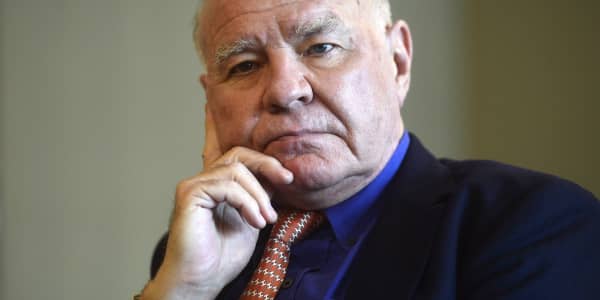
Dividend stocks are often featured in a flight to safety, so why not dividend exchange-traded funds?
With the ongoing threat of an emerging market meltdown, for example, there are some EM investment opportunities that offer dividends, said Tyler Mordy, co-chief investment officer at HAHN Investment Stewards.
"Look at an ETF like the WisdomTree Emerging Markets Equity Income Fund [DEM], with a dividend yield of 4.3 percent," Mordy told CNBC's Bob Pisani at the Inside ETFs Conference, sponsored by ETF.com. The fund is investing in a diversified mix of emerging markets, including Russia, China and Eastern Europe.
The fund is down from last year but is a classic "buy low, sell high" play for investors looking to get back into emerging markets, Mordy said. And despite a less than stellar performance in 2013, DEM fared better than larger funds, including iShares MSCI Emerging Markets ETF (EEM), which fell 11.8 percent last year.
(Read more: Big problem with emerging markets ETFs)
If investors want to move away from emerging markets as well as from aggressive equities investing during what could be a turbulent time, dividend ETFs are an option. The problem is you don't want to chase ETFs that chase only the highest-yielding dividend stocks, Mordy said. The reason: When interest rates go up, those high-dividend funds can take a hit and underperform, much like bond funds.
"A lot of people in the run-up [last year] were chasing yield, chasing dividend," he said. "You have to be very careful of those ETFs."
(Read more: ETFs 2014: 3 big risks, 3 big opportunities)
There is a way investors can still play the high-dividend game that provides a bit more protection. Mordy pointed to funds such as the Vanguard Dividend Appreciation ETF (VIG), composed of stocks that increase dividends over the course of a decade. It creates "a high-quality portfolio and eliminates some the risks we saw last year," he said.
Investors may want to look for funds that include stocks with consistent dividend increases versus those focused solely on the highest-dividend-yielding stocks—it's the longer-term play, anyway.
—By Anthony Volastro, Segment Producer, CNBC. Follow him on Twitter @VolastroCNBC




